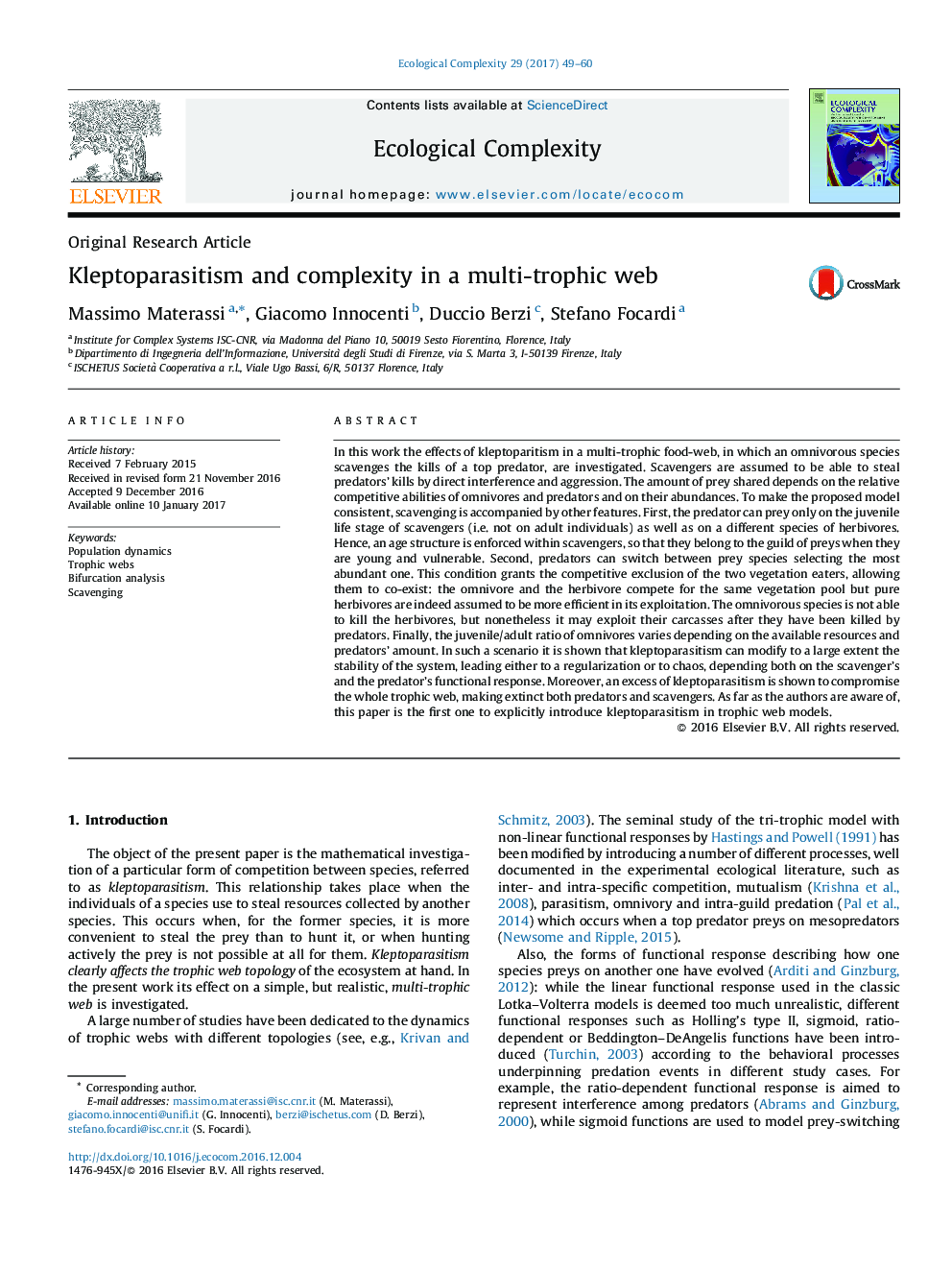| کد مقاله | کد نشریه | سال انتشار | مقاله انگلیسی | نسخه تمام متن |
|---|---|---|---|---|
| 5741282 | 1617085 | 2017 | 12 صفحه PDF | دانلود رایگان |
- Scavenging of omnivorous species on top predators (inter-guild competition).
- Scavenging stabilizes or destabilizes the system, depending on the system parameters.
- Scavengers undergo predation only in their juvenile age.
- Stolen kills depend on the relative scavengers/predators strength (kleptoparasitism).
In this work the effects of kleptoparitism in a multi-trophic food-web, in which an omnivorous species scavenges the kills of a top predator, are investigated. Scavengers are assumed to be able to steal predators' kills by direct interference and aggression. The amount of prey shared depends on the relative competitive abilities of omnivores and predators and on their abundances. To make the proposed model consistent, scavenging is accompanied by other features. First, the predator can prey only on the juvenile life stage of scavengers (i.e. not on adult individuals) as well as on a different species of herbivores. Hence, an age structure is enforced within scavengers, so that they belong to the guild of preys when they are young and vulnerable. Second, predators can switch between prey species selecting the most abundant one. This condition grants the competitive exclusion of the two vegetation eaters, allowing them to co-exist: the omnivore and the herbivore compete for the same vegetation pool but pure herbivores are indeed assumed to be more efficient in its exploitation. The omnivorous species is not able to kill the herbivores, but nonetheless it may exploit their carcasses after they have been killed by predators. Finally, the juvenile/adult ratio of omnivores varies depending on the available resources and predators' amount. In such a scenario it is shown that kleptoparasitism can modify to a large extent the stability of the system, leading either to a regularization or to chaos, depending both on the scavenger's and the predator's functional response. Moreover, an excess of kleptoparasitism is shown to compromise the whole trophic web, making extinct both predators and scavengers. As far as the authors are aware of, this paper is the first one to explicitly introduce kleptoparasitism in trophic web models.
Journal: Ecological Complexity - Volume 29, March 2017, Pages 49-60
